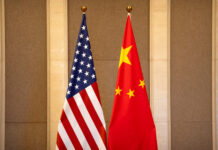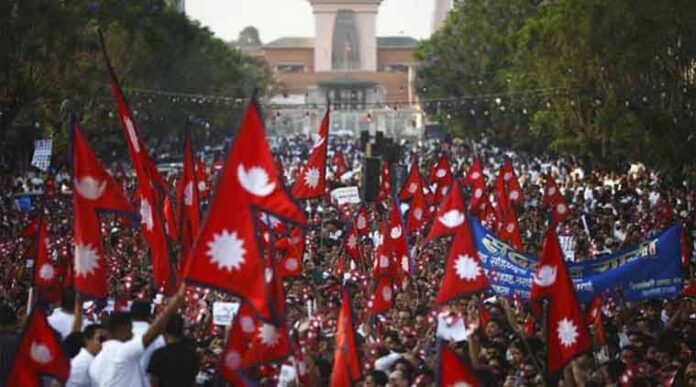Following the dissolution of the House of Representatives, the lower house of the Federal Parliament of Nepal, on 22 May, a fresh general election has been scheduled to be held by November 2021 to elect the 275 new members for the sixth time in the democratic history of Nepal, although, earlier to this it was also dissolved on 20 December 2020 but restored by judicial interference, while the proper five-year term of the existing house was to expire in March 2023. With the end of the monarchy in May 2008 and declaration of a Federal Democratic Republic, Nepal’s real experience and challenge began and even going further, the nation took some uptodate knowledge of democratic twists and turns. In the general elections of May 2018, no single political party got a sufficient number (138) to form the government, but this was done after the merger of two main political parties, the Communist Party of Nepal (Unified Marxist-Leninist), led by K. P. Sharma Oli, and the Communist Party of Nepal (Maoist-Centre), led by Pushpa Kamal Dahal, as the Nepal Communist Party. Under the terms of agreement the leaders of the two parties consented to share the post of Prime Minister for a period of two and a half years each and in an important decision reached on 20 November 2019 they also agreed to let Oli complete his full term as Prime Minister. But, soon thereafter, a campaign of charges and countercharges started between them, leading to the dissolution of the House for the first time on December 2020. It was reinstated after a decision of the Supreme Court of Nepal, however, as a follow-up of the another writ petition which annulled the decision of the Election Commission of the country to retain its old name, and the Oli government came back as a minority and was also defeated in a no-confidence motion, ultimately to recommend the dissolution of the House and the seeking of fresh mandate from the people.
However, in this transitional phase the hope lies in the present Constitution of 2015 which provided a federal democratic republic with three government tiers-central, provincial and local. As these are the basics of democracy which will make the spirit of the system deep-rooted with a sense of duty and pride, it will also be able to check corruption at all levels, make the governance easy and transparent and create a political awareness in the country in the years to come
The present-day democracy of Nepal has travelled a long journey of about seven decades, beginning with the first movement of 1951 for the establishment of a democratic rule in the country, and was affected by many factors which included the expansion of the country’s education system, increased literacy rate, rising level of higher education and independence of India, whose political leaders and the government as well remained permanent sympathizers and supporters of pro-democratic movements in Nepal. By the time two political parties Nepali Congress Party, which later became Nepali Congress (1947), and Nepal Communist Party (1949), had already been founded before the commencement of the first democratic movement. As a result of their joint action against the Rana monarchy, internal and international pressure, the royal regime agreed for the peaceful transfer of power which paved the way for constitutional monarchy, known as the ‘Delhi Settlement’ of 1951, although itonly lasted for a short period of nine years.
In December 1960 King Mahendra assumed all powers and introduced the Panchayat System with limited democratic practices. In the post-1960 rule of King Mahendra democratic practices began shrinking and repressive measures were used freely to suppress the anti-regime movements and student protests which gave birth to the ‘Jana Andolan’ of 1990. In comparison with earlier movements, this one was large in size and effect and included students, human rights organisations and professional unions which gave a call for mass movement. Ultimately democracy was restored in Nepal with a multiparty system in the framework of constitutional democracy. In fact, it was a shift to neoliberal policies that promoted economic liberalisation and many other timely steps to move the country forward.
In comparison to earlier, the post-1991 period faced more violent protests, movements, insurgencies in which thousands of people, including the civilians, were killed and hence was considered decisive. The constitutional monarchy implemented in 1991, witnessed political instability due to frequent government changes, internal party battles and corruption. The midterm election held for the House of Representatives led to a hung parliament producing eight unstable governments within five years, and in this environment of anarchy from 13 February 1996 the People’s War was declared which, among other things, demanded abolition of the monarchy, formation of an interim government and establishment of a constituent assembly. An important event took place on 1 June 2001 in which the royal family of Nepal was murdered and it was followed by the crowning of Gyanendra as the new King of the country. This further worsened the situation and now the insurgent group’s attacks on police and armed forces became normal, resulting in the declaration of the state of national emergency, making the condition worse on both sides.
Ultimately, a peace agreement was signed between an alliance of the seven political parties and the Maoist insurgents in 2006 through a 12-point agreement which outlined the democratic framework to be established after the abolition of monarchy. It included the formation of an internationally monitored interim government, the holding of free and fair elections, and a guarantee of the system of governance, civil, political and human rights, with rule of law. Following elections in 2008, the Communist Party of Nepal (Unified Marxist -Leninist) won 38 percent of the votes and Pushpa Kamal Dahal became the Prime Minister of the new Federal Republic of Nepal.
Pursuing the recommendations of the Nepali Cabinet made on 22 May, President Bidya Devi Bhandari, dissolved the House of Representatives and announced midterm elections on 12 and 19 November. The declaration is the end of the political drama continuing for years, especially after merger of the two Communist groups and their active involvement in power politics of the day, although nothing seems unusual in a country which had seen 25 Prime Ministers in last 29 years, excluding the former King Gyanendra, along with turbulent political changes in the last three decades including a decade-long armed struggle (1996-2006) and seven constitutions in the previous 70 years. However, in this transitional phase the hope lies in the present Constitution of 2015 which provided a federal democratic republic with three government tiers-central, provincial and local. As these are the basics of democracy which will make the spirit of the system deep-rooted with a sense of duty and pride, it will also be able to check corruption at all levels, make the governance easy and transparent and create a political awareness in the country in the years to come.























